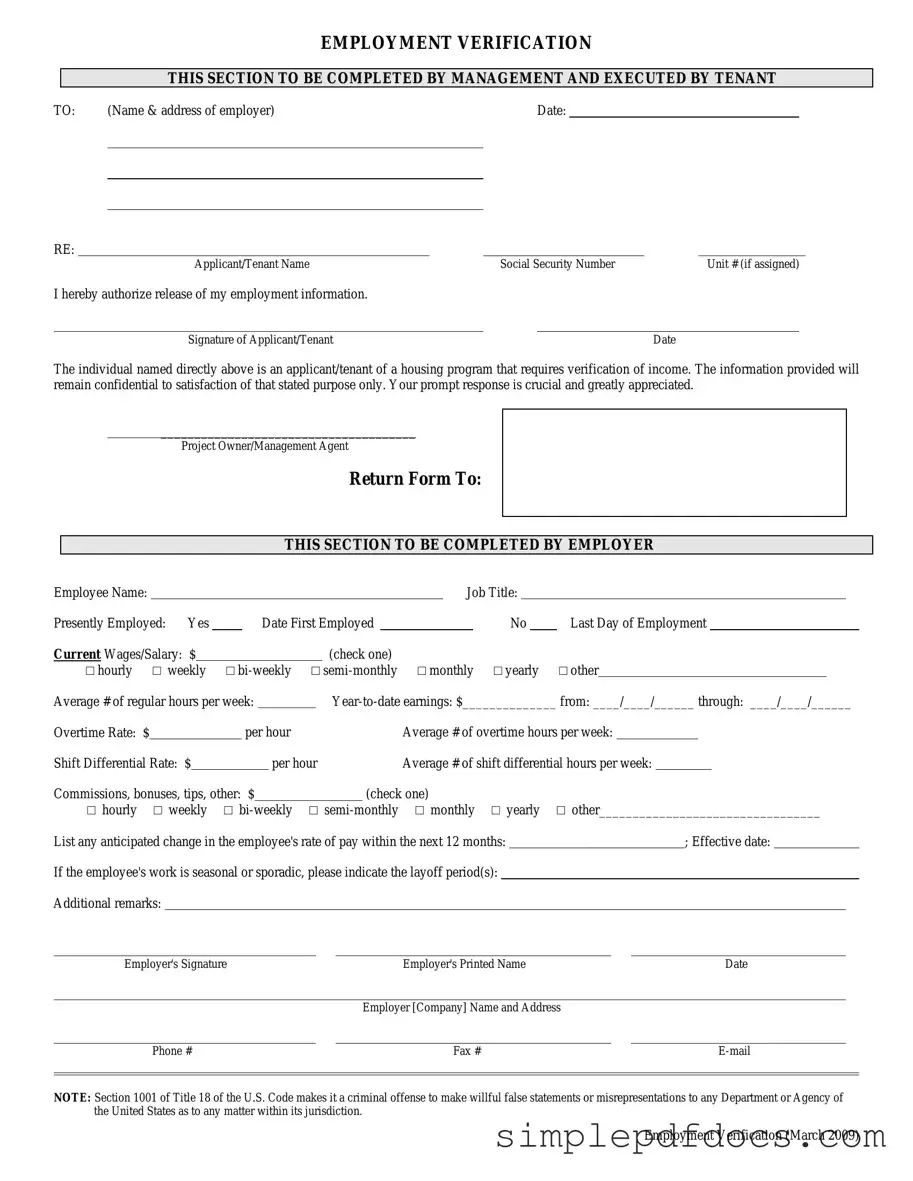The Employment Verification Form is a crucial document that plays a significant role in the hiring process. It is primarily used by employers to confirm a candidate's previous employment history, including job titles, dates of employment, and reasons for leaving. This form serves as a reliable tool for employers to assess the qualifications and experience of potential hires. Additionally, it helps to prevent any misrepresentation of work history, ensuring that the information provided by applicants is accurate. Typically, the form requires the candidate's consent to release their employment details, safeguarding privacy while allowing for necessary verification. Timely completion of this form can expedite the hiring process, making it essential for both employers and job seekers to understand its importance. By streamlining communication between past employers and prospective ones, the Employment Verification Form fosters a transparent and efficient recruitment experience.
